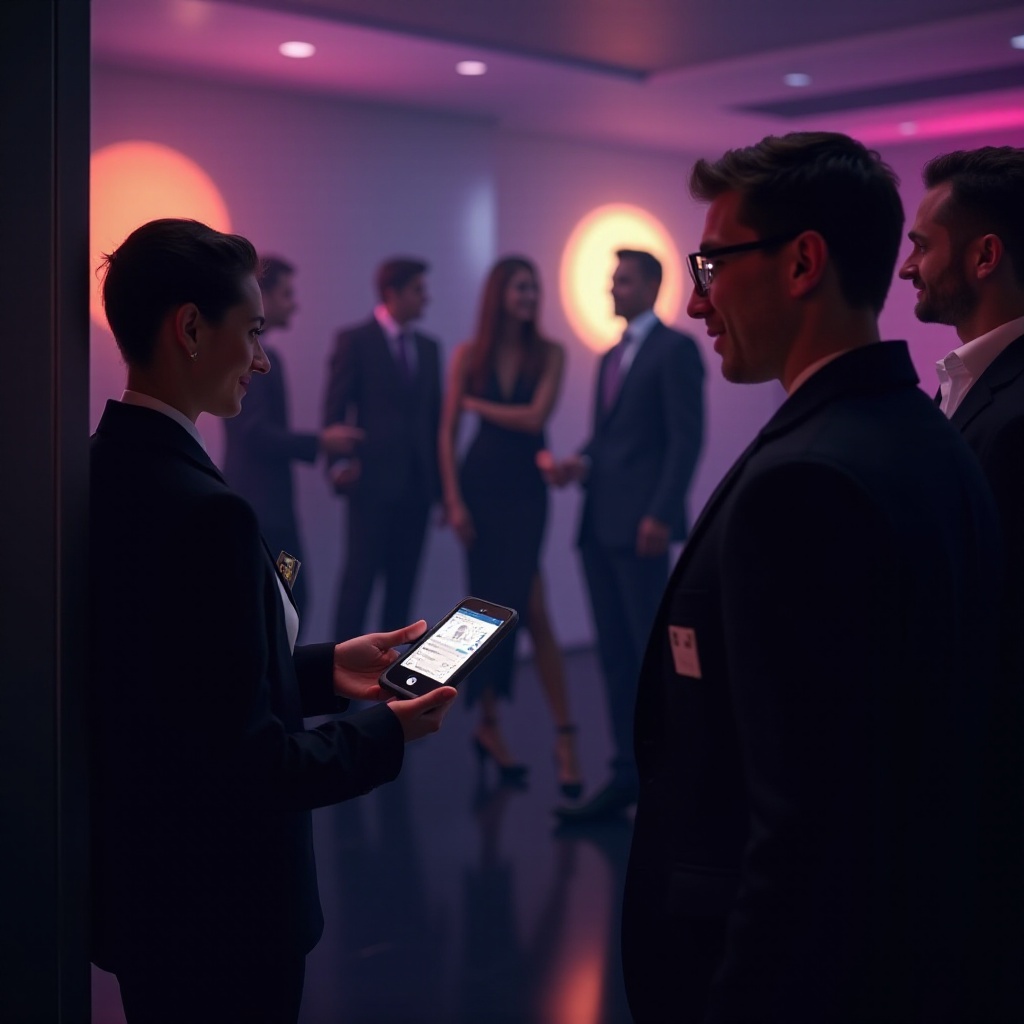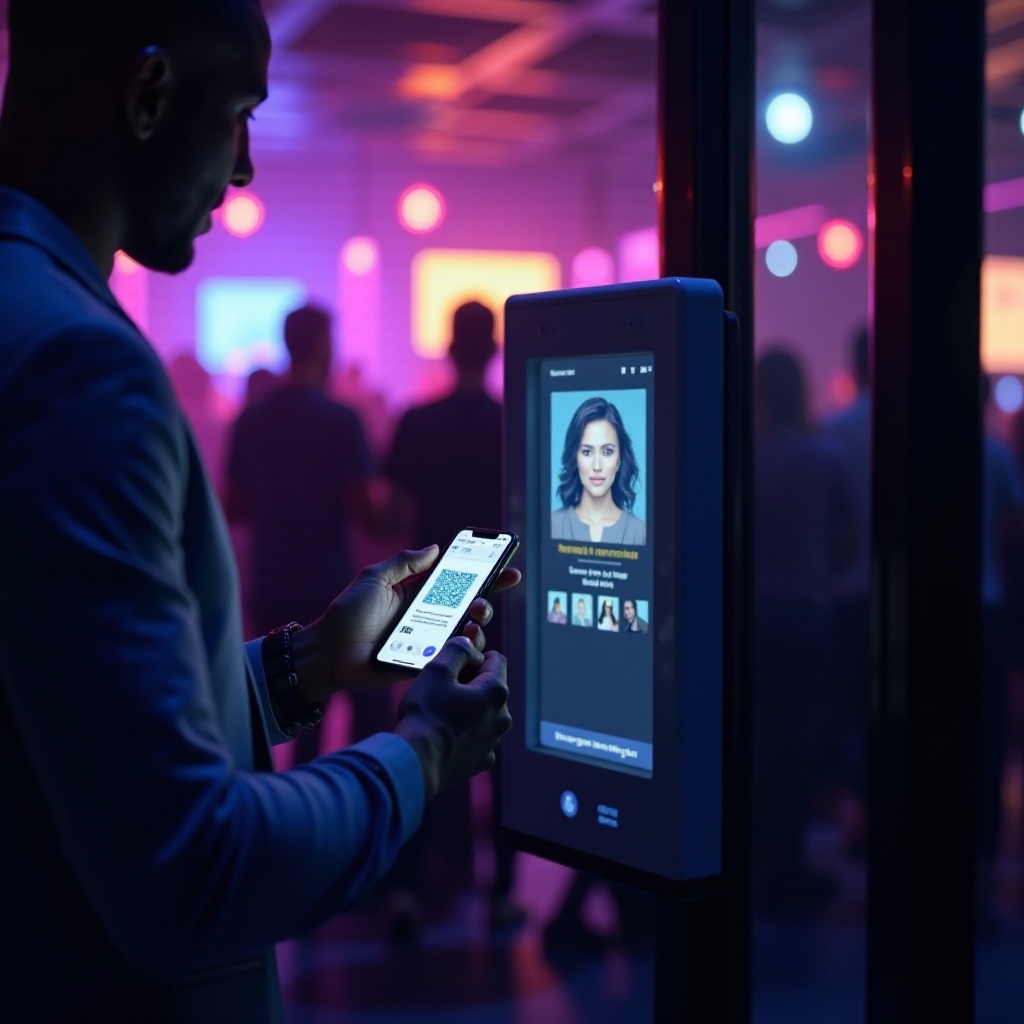Introduction
Club ID scanners have become an indispensable tool for nightlife venues in enhancing security and streamlining operations. These devices verify age and identity, preventing underage drinking and other security issues. By understanding the technology behind club ID scanners, club owners and managers can make informed decisions about integrating these systems into their security protocols, thereby maintaining a controlled and secure environment for their patrons.

What Are Club ID Scanners?
Club ID scanners are devices designed to read and verify the authenticity of identification cards, such as driver’s licenses and state-issued IDs. They are crucial for nightclubs and venues that serve alcohol, ensuring that only eligible patrons gain entry. The devices extract data from the ID card’s barcode or magnetic stripe, checking it against a set of criteria to confirm its validity.
While the primary function of club ID scanners is to verify age and identity, they also detect fake IDs and track entry and exit times. This capability helps venue owners maintain a controlled environment and comply with legal requirements, thus enhancing both security and operational efficiency.
Key Components of Club ID Scanners
To grasp how club ID scanners work, it is essential to examine their key components, which ensure accurate and reliable functioning.
Hardware Elements
The hardware elements of a club ID scanner typically include a card reader, a display screen, and a data storage unit. The card reader captures information embedded in the ID card’s barcode or magnetic stripe, designed to be durable and resistant to wear and tear, ensuring consistent performance in high-traffic environments. The display screen allows the bouncer or operator to view captured data and any warnings or alerts generated by the scanner. Moreover, the data storage unit, which is often secure internal memory or an external database, retains scanned information for future reference.
Software Elements
The software of an ID scanner is equally vital as it processes the captured data and performs real-time verification. The software checks scanned information against a database of known IDs, flagging discrepancies or potential issues such as expired IDs or known fraudulent patterns. Advanced ID scanner software can integrate with security systems and customer management tools, providing venue owners with valuable insights into patron behavior and preferences.
The Scanning Process
The process of scanning an ID card with a club scanner involves several steps, each critical to ensuring accurate and reliable verification.
Capturing ID Information
When an ID card is swiped through or inserted into the scanner, the device captures the information stored in the barcode or magnetic stripe. This data typically includes the individual’s name, date of birth, and ID number. High-quality scanners capture this information quickly and accurately, minimizing the risk of human error.
Real-time Data Verification
Once the information is captured, the scanner’s software immediately processes the data. It compares scanned details against a database of valid IDs, checking for discrepancies or issues like expiration dates or known fraudulent patterns. This real-time verification process promptly flags any concerns, allowing the venue’s security team to take appropriate action.
Types of ID Scanners Used in Clubs
Various types of ID scanners are available, each with distinct advantages and applications. Understanding the differences can help club owners choose the right system for their needs.
Handheld Scanners
Handheld ID scanners are portable devices, providing staff the freedom to move about while verifying IDs. These scanners are ideal for venues with multiple entry points or events where mobility is essential. Despite their small size, handheld scanners offer robust functionality and accuracy.
Desktop Scanners
Desktop ID scanners are stationary devices, typically used at fixed entry points. These scanners are suitable for high-traffic venues where stationary verification is practical. They generally offer larger screens and more advanced software capabilities than handheld versions.
Integrated Systems
Integrated ID scanner systems combine hardware and software into a comprehensive security solution. These systems can include multiple scanner types, centralized databases, and integration with other security and management tools. Integrated systems provide the highest functionality and data management capabilities.
Benefits of Using Club ID Scanners
Incorporating ID scanners into a nightclub’s security protocol offers numerous benefits.
-
Enhanced Security: ID scanners help prevent underage drinking and fraudulent activities, creating a safer environment for patrons and staff.
-
Compliance with Regulations: Using ID scanners ensures that clubs adhere to legal age restrictions, reducing the risk of fines and penalties.
-
Operational Efficiency: Scanning IDs is faster and more accurate than manual checks, reducing entry wait times and improving customer satisfaction.
-
Data Collection: ID scanners can track patron attendance and behavior, providing valuable insights for marketing and operational decisions.
Privacy and Data Security Considerations
While ID scanners offer significant benefits, it is crucial to address privacy and data security concerns. Clubs must ensure that the information collected by scanners is stored securely and used responsibly. Compliance with data protection regulations, such as the General Data Protection Regulation (GDPR), is essential. Clubs should implement robust encryption and access control measures to protect patron data from unauthorized access and breaches.
Challenges and Limitations
Despite their advantages, ID scanners also have limitations. High-quality devices and software can be expensive, and initial investment may be a barrier for some venues. Additionally, no scanner is foolproof; sophisticated counterfeit IDs may occasionally bypass verification. Regular updates and staff training are essential to maintain the effectiveness of ID scanning systems.

Innovations and Future Trends
The future of club ID scanners lies in advanced technologies like biometric verification and artificial intelligence. These innovations promise to enhance accuracy and security, providing more robust solutions for nightlife venues. Increased integration with other security and hospitality systems will enable seamless, smart venue management.

Conclusion
Club ID scanners play a critical role in maintaining security and compliance in nightlife venues. By understanding the technology and its benefits, club owners can make informed decisions about implementing these systems. As innovations continue to advance, ID scanners will become even more integral to nightlife security.
Frequently Asked Questions
How accurate are club ID scanners?
Club ID scanners are highly accurate, especially when using advanced software and regularly updated databases. However, no system is 100% foolproof, and sophisticated counterfeit IDs can sometimes bypass detection.
What happens to the data collected by ID scanners?
The data collected by ID scanners is stored securely, often in encrypted databases. It is used for verifying patron age and identity, tracking attendance, and ensuring compliance with legal requirements. Clubs must adhere to data protection regulations to ensure patron privacy.
Are there any legal issues with using ID scanners in clubs?
Using ID scanners in clubs is legal and helps ensure compliance with age verification laws. However, clubs must handle the collected data responsibly and comply with data protection regulations to avoid legal issues.

